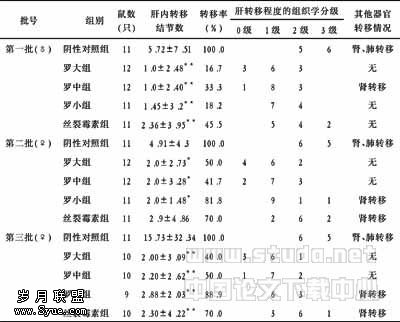激光治疗急性缺血性脑梗死研究进展
【关键词】 缺血性脑梗死
在缺血性脑梗死急性期,溶栓是改善脑灌注的积极药物疗法,其首选的是重组组织型纤溶酶原激活剂(rt-PA)。但溶栓存在继发出血的危险。据统计,使用阿替谱酶(目前美国FDA唯一批准认为安全有效的临床rt-PA类溶栓制剂)溶栓后36h症状性颅内出血发生率达6.4%[1]。另一方面,由于梗死导致的血循障碍引起的局部代谢改变,会引发一系列活性毒素、自由基等的级联反应[2]。所以,溶栓的时间越早越好,一旦超过了这个时限,不可逆损伤已经形成,出血风险增加,也就失去了溶栓的意义。因此,溶栓有严格的时间窗限制,一般要求在梗死发生6h内施行。
然而,要在广范围内推行早期溶栓治疗,受到了种种条件的制约。即使在美国,能在急性缺血性脑梗死(AIS)发生后3h内完成溶栓的大概也只有4%~15%[3,4]。
1971年,Hempel[5]在激光光凝对兔子视觉电位影响的实验中发现,低能量激光可以增强视神经被电休克处理后兔子外侧膝状体神经元及视皮质突触后电位,促进视力恢复。研究表明,激光疗法可以缩小大鼠心肌梗死病灶范围[6~9〗。Lapchak等[10]认为心、脑缺血性病变有着非常相似的病理改变,遂将这种治疗方法移来用于AIS的研究中。在对24h内的兔子小血栓栓塞型卒中模型(RSCEM)进行低能量激光疗法(LLLT)治疗后,6h内兔子的神经功能评分有了显著提高,且在21天内存在持续效应。随后,陆续有不同动物模型的研究报道[11~13]证实了这一研究结果。
2007年Stroke刊登了美国[14]进行的一项LLLT治疗AIS的疗效与安全性的多中心I期临床试验(NEST-I),纳入了120例未经t-PA溶栓治疗的24h内的AIS患者,经NIHSS评分在7~20分之间,治疗组照射持续时间从2h到24h不等,平均治疗时间16h,结果显示治疗组NIHSS和改良Rankin (mRan)评分提高明显优于安慰剂组。即使是治疗后90天,这种优势仍然很明显。mRan评分显示:治疗组与安慰剂组患病率优势比为1.38。而病死率及严重不良反应发生率两组没有统计差异。NEST-I的成功鼓舞了人们对非药物治疗AIS的信心,目前该试验已进入Ⅲ期临床试验阶段,结果令人期待。
在AIS激光治疗研究中,LLLT是指使用长波段(808nm)、低密度(7.5mW/cm2)、连续波模式激光,经颅单侧或双侧直接光照射治疗。目前研究使用的光源主要有氦氖(He-Ne)激光、砷化镓(Ga-As)激光,国外研究后者多用。
激光治疗AIS的机制尚不明确。LLLT在心肌梗死的作用机制被认为主要有促进血管新生[7],抗氧化[9],抗细胞凋亡[15]。有学者猜想LLLT可以促进线粒体呼吸[16],调整细胞色素C氧合酶[17],从而促进能量代谢,增加ATP合成,最终促进神经元功能恢复。Leung等认为LLLT能够抑制NO合酶(NOS)活性,同时上调转化生长因子-β1(TGF-β1),前者被发现有神经毒性,而后者则具有神经保护作用[18]。在实验中,双侧大脑中动脉闭塞模型(MCAO)大鼠的NOS活性在缺血发生后第3天开始增高,4~6天达到峰值,第7天时回落至正常水平。LLLT组,NOS 活性及表达在各照射时间组(1min,5min,10min)都被显著抑制,而且TGF-β1的表达也较对照组明显上调。Oron等[12]认为除了以上原因,还可能与神经再生以及神经元、神经支持细胞的移行有关。他们分别采用外科手术法和注射纤维蛋白法(这种方法被认为是最接近AIS发病原理)制造MCAO模型大鼠,通过免疫组化法,检测新生神经元相关标志物:溴去氧尿嘧啶(BrdU) 、同型微管蛋白III (TUJ1)、双皮质素(DCX)。BrdU、TUJ1是细胞增殖标志物,DCX与神经原移行有关,它主要存在于胚胎及成年期脑室下区域[19]。实验发现两种模型的LLLT组大鼠,BrdU、TUJ1、DCX都有成倍增加。
由于动物实验所选动物和造模方法不同,LLLT时间窗的选择有所不同。在RSCEM实验中有效治疗时间都为卒中后6h以内,而在MCAO鼠的实验中则被认定为24h以内[12]。一般认为,在人体有效治疗时间窗是兔子实验时间窗的6倍,即若在兔子的时间窗为6h,则在人体为24h[2]。NEST-I的成功,也进一步验证了这个观点。
虽然,不论是动物实验还是临床试验都证实了激光治疗的有效性,但其治疗风险仍未明了。Ilic等[20]的实验证明,在750mW/cm2以内的照射剂量在70天内是安全的,而超过此强度的照射在光电显微镜下显示明显组织热学效应损伤。NEST-I的试验只对不同照射时间进行了探讨,并未对照射剂量进行进一步探索。有学者认为,激光一方面促进血管新生,改善脑供血;另一方面伴随新生的微血管瘘也增加了出血风险[2]。而且,激光一直被认为会导致广泛的基因突变[8],LLLT是否存在这种危险,目前仍没有这方面的长期研究报道。
LLLT作为AIS的非药物治疗研究的代表之一,是目前被广泛认证效果明显的治疗手段。此外,一些传统疗法在AIS的应用也在研究中,如高压氧疗[21]、冷冻疗法[22]。不断更新的外科技术也为微创物理疗法带来新面貌,如螺旋取栓器、neurojet[23]等,以几种方法相结合的综合疗法[23]。不过,许多研究目前还处于实验阶段,其有效性和安全性以及远期疗效还有待进一步证明。另外,神经发生机制研究的不断拓展、深入,在其他神经、精神疾病的治疗研究中的新发现,或许会使我们传统的尽量挽救半暗带的治疗观念提高到更为积极的层面,从而找到不经代价昂贵、技术仍未成熟的干细胞移植技术途径。
【】
1 Tissue plasminogen activator for acute ischemiic stroke.The National Institute of Neurological Disorders and Stroke rt-PA Stroke Study Group.N Engl J Med,1995,333(24):1581-1587.
2 Paul A Lapchak,Dalia M Araujo.Advances in ischemic stroke treatment:neuroprotective and combination therapies.Expert Opin.Emerging Drugs,2007,12(1):97-112.
3 Broderick JP,Lu M,Kotharir,et al.Finding the powerful measures of the effectiveness of tissue plasminogen activator in the NINDS tPA stroke trial.Stroke,2000,31(10):2335-2341.
4 Grotta JC,Burgin WS,El-mttwalli A,et al.Intravenous tissue-type plasminogen activator therapy for ischemic stroke :Houseton experience 1996 to 2000.Arch Neurol,2001,58(12):2009-2013.
5 Franklin G. Hempel. Rabbit visual potentials after laser Photocoagulation. Invest. Ophthal,1971,10(9):639-649.
6 Ad N, Oron U. Impact of low level laser irradiation on infarct size in the rat following myocardial infarction. Int J Cardiol, 2001,80:109-116.
7 Yaakobi T, Shoshany Y, Levkovitz S, et al. Long-term effect of low energy laser irradiation on infarction and reperfusion injury in the rat heart.J Appl Physiol, 2001,90:2411-2419.
8 Shefer G, Barash I, Oron U, et al. Low-energy laser irradiation enhances de novo protein synthesis via its effects on translationregulatory proteins in skeletal muscle myoblasts. Biochim Biophys Acta,2003,1593:131-139.
9 Oron U, Yaakobi T, Oron A, et al. Low-energy laser irradiation reduces formation of scar tissue after myocardial infarction in rats and dogs. Circulation, 2001,103:296-301.
10 Lapchak PA, Wei J, Zivin JA. Transcranial infrared laser therapy improves clinical rating scores after embolic strokes in rabbits. Stroke, 2004,35(8):1985-1988.
11 Detaboada L, Ilic S, Leichliter-Martha S,et al. Transcranial application of low-energy laser irradiation improves neurological deficits in rats following acute stroke. Lasers Surg Med, 2006,38(1):70-73.
12 Amir Oron, Uri Oron, Jieli Chen,et al. Low-Level Laser Therapy Applied Transcranially to Rats After Induction of Stroke Significantly Reduces Long-Term Neurological Deficits. Stroke, 2006,37:2620-2624.
13 Oron A, Oron U, Streeter J,et al. low-level laser therapy applied transcranially to mice following traumatic brain injury significantly reduces long-term neurological deficits.J Neurotrauma, 2007,24(4):651-656.
14 Yair Lampl, Justin A. Zivin, Marc Fisher,et al. Infrared Laser Therapy for Ischemic Stroke: A New Treatment Strategy Results of the NeuroThera Effectiveness and Safety Trial-1 (NEST-1).Stroke, 2007,38:1843.
15 Sheffer G, Patridge TA, Heslop L, et al. Lowenergy laser irradiation promotes the survival and cell cycle of skeletal muscle satellite cells. J Cell Sci, 2002,115:1-9.
16 Conlan MJ, Rapley JW, Cobb CM. Biostimulation of wound healing by low-energy laser irradiation, a review. J Clin Periodontol, 1996,23:492-496.
17 Wong-Riley MTT, Liang HL, Eells JT, et al. Photobiomodulation directly benefits primary neurons functionally inactivated by toxins. J Biol Chem, 2005,280: 4761-4771.
18 Leung MC, Lo SC, Siu FK,et al. Treatment of experimentally induced transient cerebral ischemia with low energy laser inhibits nitric oxide synthase activity and up-regulates the expression of transforming growth factor-beta 1. Lasers Surg Med, 2002,31(4):283-288.
19 Oltras S, Martinez F, Orellana C, et al. The doublecortin gene, a new molecular marker to detect minimal residual disease in neuroblastoma. Diagn Mol Pathol, 2005,14: 53-57.
20 Ilic S, Leichliter S, Streeter J,et al. Effects of power densities, continuous and pulse frequencies, and number of sessions of low-level laser therapy on intact rat brain. Photomed Laser Surg, 2006,24(4):458-466.
21 Gennady G,Rogatsky,Edward G.Shifrin,Avraham Mayevsky.Optimal dosing as a necessary condition for the efficacy of hyperbaric oxygen therapy in acute ischemic stroke:a critical review.Neurol Resear,2003,25(1):95-98.
22 Su Jian, Qiou Yongming, Chen Zhihua. Feasibility and safety of moderate hypothermia after acute ischemic stroke. Int. J. Devl Neuroscience, 2003,21: 353-356.
23 Joseph P,Broderick,William M. Feinberg Lecture: Stroke Therapy in the Year 2025: Burden, Breakthroughs, and Barriers to Progress.Stroke,2004, 35:205-211.











